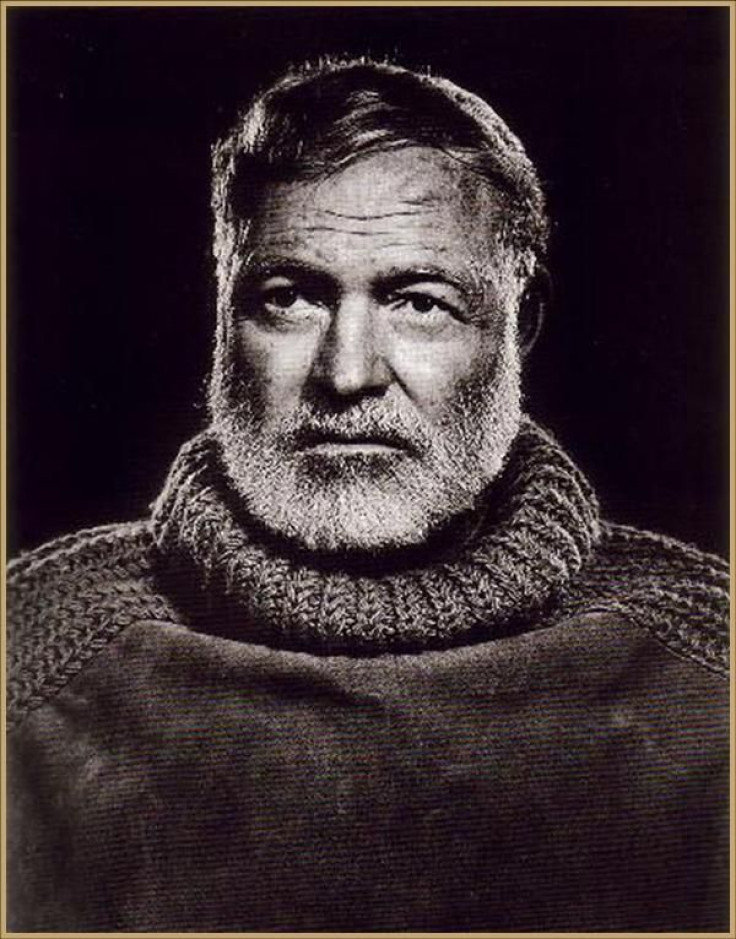The Ongoing Mystery Of Hemingway’s Misdiagnosed Death: Accident, Suicide Or Genetic Disorder?

Ernest Hemingway, one of America's greatest authors and journalists, died 52 years ago from a gunshot wound on July 2, 1961. But the true cause of his death is in fact unknown, whether it was an accident, a suicide, or a prevalent genetic killer that caused toxic levels of iron to flood the body, ultimately inciting depression and agony. Experts still debate the reasons behind Hemingway's pulling of the trigger.
A misdiagnosed disorder in his early 50s caused doctors to overlook hemochromatosis, the iron-overloading disorder that causes internal damage of joints and organs, cirrhosis of the liver, heart disease, and depression.
Hemochromatosis is a hereditary disorder characterized by excessive accumulations of iron, which leads to diabetes, liver dysfunction, and bronze skin pigmentation. It is also known as bronze diabetes or the Celtic Curse, and when it goes untreated, can cause severe pain, suffering, and death.
Ironically, July is National Hemochromatosis Awareness Month, the same month Hemingway was found in his home in Idaho at 7:30 a.m. by his fourth wife, Mary, with a gunshot wound to the head. Mary claimed he killed himself by accident while cleaning his double-barreled, 12-gauge shotgun in his foyer, wearing nothing but a robe and pajama bottoms. She was placed under sedation for the shock of her husband's death, but not before issuing a statement to the public that funeral arrangements would be private.
At the time of his death, Hemingway was 61 years old. According to Mayo Clinic, just days before the tragic death, he was receiving treatment for what was thought to be hypertension and a "very old" case of hepatitis at Mayo Clinic, a reputable not-for-profit medical hospital. His doctor described his health as "excellent" just a month before his death. He spent 56 days in the same hospital the year before with the same strange symptoms and conditions.
According to the Iron Disorders Institute, Hemingway was not suffering from an old disease, but actually an undetected and untreated case of hemochromatosis. Swiss scientist Sebastian Dieguez wrote in a 2010 journal article that Hemingway's recorded behavior and symptoms were misdiagnosed, and his death was not an accident, but a suicide driven by the pain of untreated hemochromatosis.
The rare blood disease, left untreated, causes extensive organ damage, which is especially worsened when mixed with the excessive drinking in which Hemingway frequently indulged. He was quite fond of absinth — a highly alcoholic spirit derived from botanicals including flowers and the leaves of Artemisia absinthium, which has been notoriously associated with illicit behavior since the early 1900s.
He complained often of severe hangover pains, which can now be related back to his overload iron disorder. He relied on three hangover cures to get him through the day, each of which called for more drinking, whether it be the tomato juice and beer concoction, gin and lime and Angostura bitters blend, or the absinthe and champagne medicine that required three to five doses as prescribed by Hemingway.
In his 1932 non-fiction novel, Death in the Afternoon, about the ceremony and traditions of Spanish bullfighting, Hemingway described his cures as "reviving and refreshing; cools the blood and inspires renewed interest in food, companions and life."
Despite his love for writing that won him a Nobel Prize in Literature and a Pulitzer Prize for Fiction, Hemingway was suffering from depression. According to the Hemingway Foundation of Oak Park, suicide ran in his family. John Berry, the chairman of the Foundation, said Hemingway's grandfather, father, brother, sister, and granddaughter all committed suicide.
Hemingway's sudden departure from his longtime home in Cuba, following the revolution led by Fidel Castro, his service in World War I where he was seriously wounded, and his experience as a journalist on the front in the Spanish Civil War, drove him to divorces and solitude. After years of escaping death, his health quickly started to deteriorate shortly after he was almost killed in two successive plane crashes while traveling to an African safari.
Besides suicide, the Hemingway family history is also laced with the inherited condition of hemochromatosis. At the time, medicine was not advanced enough to provide direct evidence that the writer was suffering from a genetic disorder. However, the genetic connection was made in 1996 through research on the human hemochromatosis protein gene. Historically, Irish and Celtic populations have a higher prevalence rate than any other heritage. The discovery led doctors to calculate that the condition was much more common than previously thought. Calculations based on field research have led to a one in 200 diagnosis estimate and very few fatal cases unless left untreated like Hemingway.



























